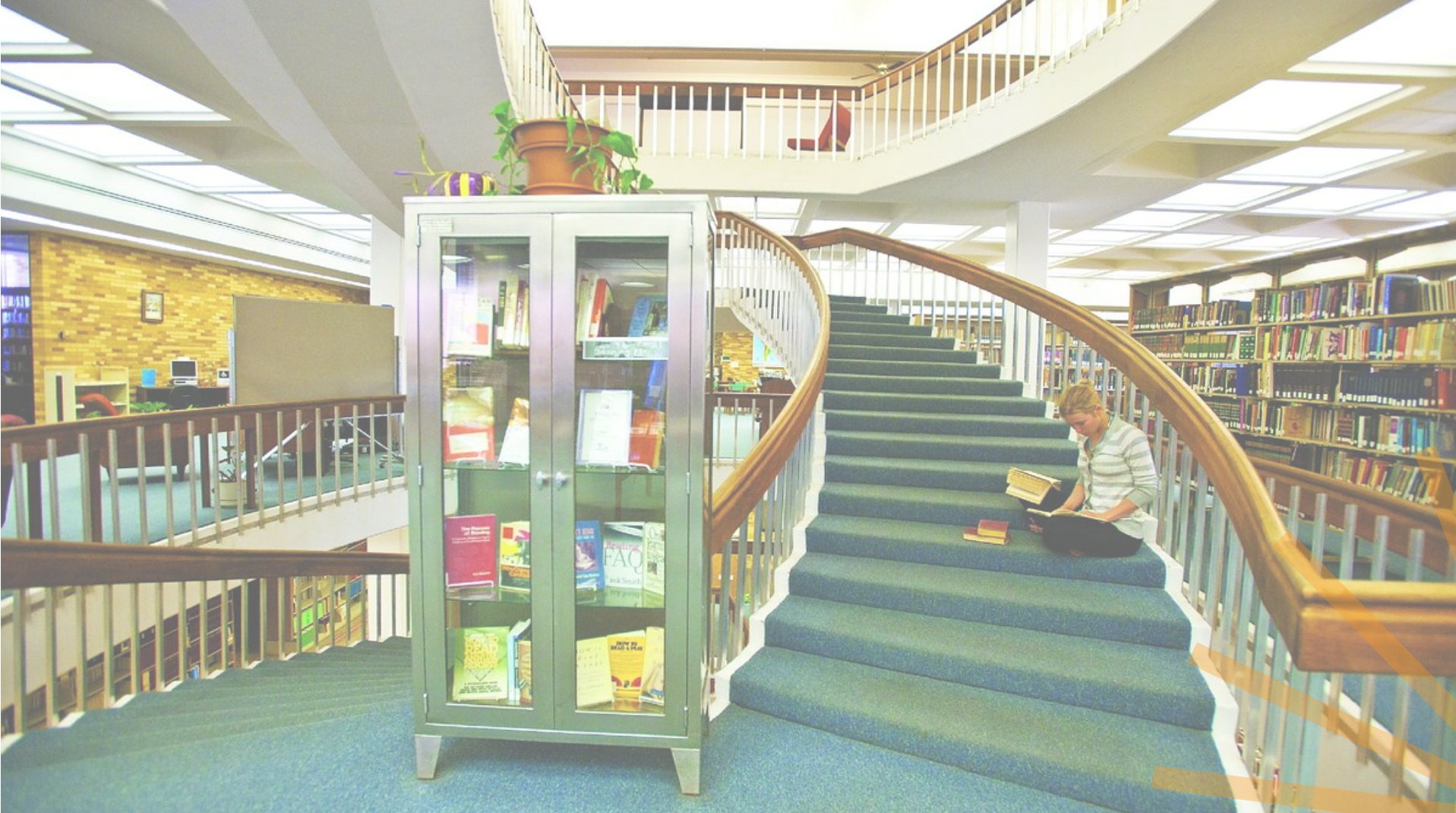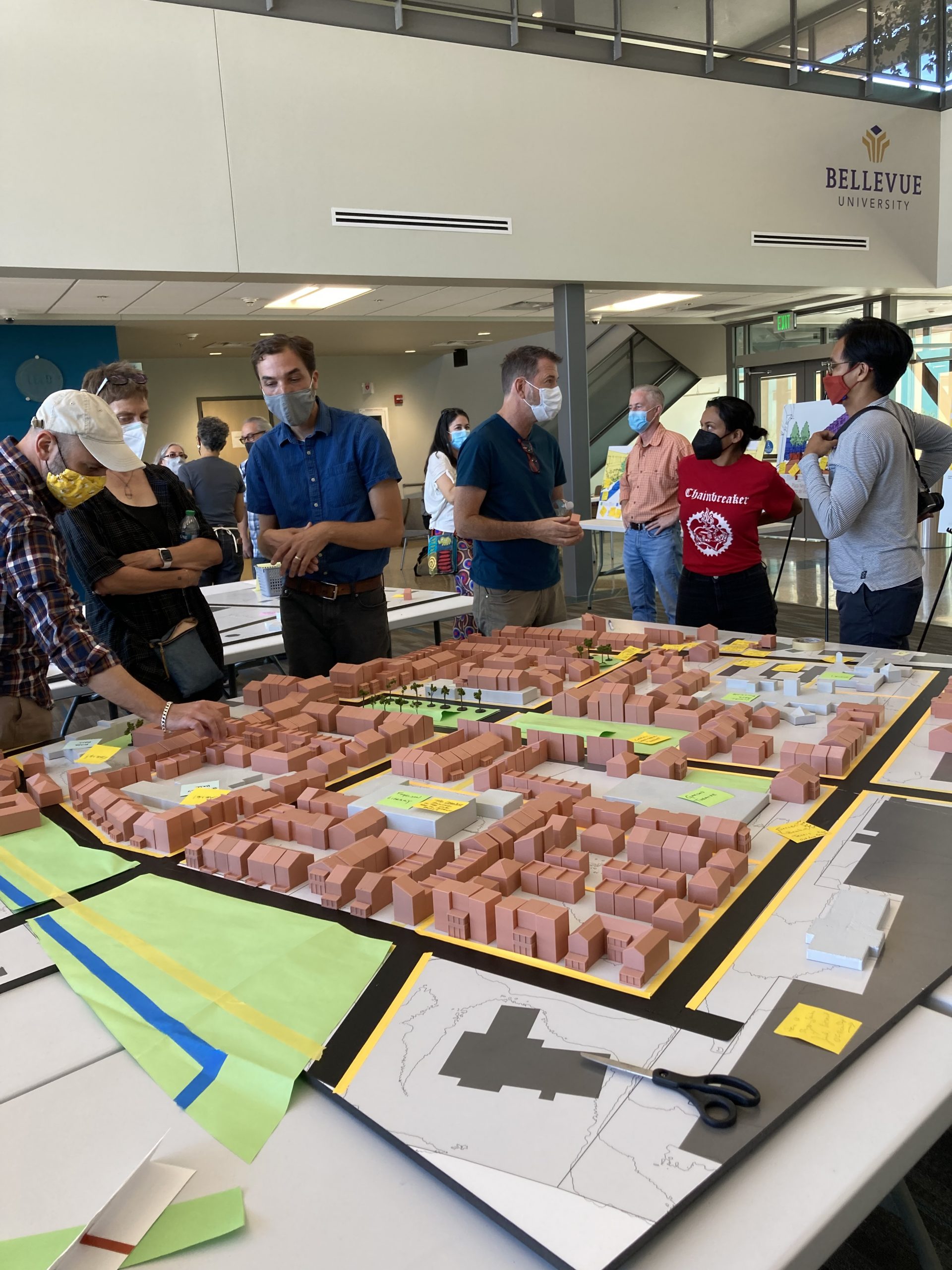News & Resource Center

News & Resource Center
News
January 2024
2023
- Governing Body Approves Agreement To Establish Arts Hub At Midtown
- City Of Santa Fe Governing Body Unanimously Approves Exclusive Negotiated Agreement (ENA) With Midtown Santa Fe Productions, Inc.
2022
- December 1, 2022: Midtown Is Moving Forward To The Implementation Phase
- November 28, 2022: KSWV Interview With Rich Brown
- November 28, 2022: Midtown Moving Forward: Master Plan Vote Scheduled For Wednesday
- November 27, 2022: My View – Midtown Plans Vote In Council This Week By Rich Brown
- November 22, 2022: EEDS Radio Interview With Rich Brown
- November 1, 2022: Midtown Redevelopment Plans Under Consideration In November
- October 28, 2022: Rich Brown, Director Of City Community And Economic Development, Radio Podcast
- October 25, 2022: Planning Commission Unanimously Endorses Midtown Master Plan
- October 18, 2022: Midtown Finance Committee Series
- October 18, 2022: Midtown Redevelopment Plans Go To Planning Commission
- August 22, 2022: Midtown Redevelopment Moves From Planning To Approval Process
- August 10, 2022: Midtown ENN Responses Online Now
- July 14, 2022: ENN Meeting On Long-Term Land Use And Zoning Plans
- July 14, 2022: Early Neighborhood Notification Meeting On Redevelopment
Presentations & Hearings
2022
- November 30, 2022: Master Plan Governing Body Presentation
- Littleglobe Video (From Governing Body Presentation)
- November 30, 2022: Governing Body Master Plan Presentation
- November 17, 2022 Progress Report Presentation
- August 17, 2022 Progress Report Presentation
- July 13, 2022 Progress Report Presentation
- March 16, 2022 Progress Report Presentation
- March 9, 2022 Progress Report Presentation
- January 19, 2022 Progress Report Presentation
2021
- December 8, 2021 Progress Report Presentation
- June 23, 2021 Progress Report Presentation
- April 28, 2021 Progress Report Presentation
- March 31, 2021 Progress Report Presentation
- August 11, 2021 Progress Report Presentation
- May 26, 2021 Progress Report
- April 28, 2021 Progress Report
- March 26, 2021 Progress Report Memo
- February 24, 2021 Progress Report Presentation
- February 24, 2021 Progress Report
- January 29, 2021 Progress Report Presentation
Land Planning Archives
Other Application Materials
- Early Neighborhood Notification (ENN) July 14, 2022 Meeting – YouTube
- Early Neighborhood Notification (ENN) July 14 Meeting Presentation
- Early Neighborhood Notification (ENN) FAQs
- Early Neighborhood Notification (ENN) FAQs – Spanish
- Midtown Early Neighborhood Notification (ENN) Guidelines – English
- Midtown Early Neighborhood Notification (ENN) Guidelines – Spanish
- Midtown Site Background For Early Neighborhood Notification (ENN) July 14th, 2022 – English
- Midtown Site Background For Early Neighborhood Notification (ENN) July 14th, 2022 – Spanish
Legislation & Approvals
- Midtown Planning Guidelines Resolution 2022-68
- Midtown Planning Guidelines Ordinance 2022-18
- Midtown Planning Guidelines Ordinance 2022-19
- Midtown Planning Guidelines Resolution 2022-67
- Midtown Planning Guidelines Resolution 2022-12
- Midtown Planning Guidelines Resolution 2018-54
- Midtown Planning Guidelines Resolution 2017-78
Archived Documents
Public Engagement
Planning
Development

FAQs
What is the City’s vision for Midtown?
The City still envisions a vibrant, people oriented, new mixed-use district with a variety of uses including, residential, higher education, film and media, arts, and culture, and programmed open spaces – all with a vision of entrepreneurship, creativity and innovation, and job development and training. The City is committed to implementing the best practices of public-private partnership used on similar large-scale development projects to create the best mix of land uses, including those previously identified by the public, including:
- Mixed Use & Residential
- Technology & Innovation
- Higher Education
- Film & Multimedia
- Public Open Space
- Arts & Culture
This vision, established through Public Visioning Sessions in the summer of 2018, has not changed since the Governing Body passed a resolution memorializing this vision in the Midtown Planning Guidelines.
What are the Midtown Planning Guidelines and development goals?
The Midtown Planning Guidelines created during Public Visioning Sessions document a shared vision, goals, and general development guidelines that serves as the foundation for the next phase of Midtown predevelopment work – the Public Planning Sessions.
What role does the City have in the redevelopment of Midtown?
The City is undertaking horizontal development activities as the Strategic Planner to facilitate a process for public input regarding the redevelopment of the site, increase the value of the property, and to ensure that shared public objectives are embedded in all future vertical development activities. This development is currently underway and will take 16-18 months.
As the Strategic Planner, the City will move forward with zoning, infrastructure and master planning (horizontal development). Horizontal Development is a term used to described activities related to preparing land or a site for vertical development (buildings and programmed open space). Horizontal Development typically includes zoning and master planning, infrastructure planning and installation of main utility and data lines, circulation and traffic planning, assessment of existing structures for their potential rehabilitation and reuse, as well as other strategic site preparation activities.
These activities are often undertaken by the owner of a site to increase its economic value for development, and if owned by a public entity, to ensure that the redevelopment of the site achieves public purposes and goals. Completing horizontal development prior to disposition of property creates higher levels of certainty and reduces risks for developers, while increasing the land value for the owner. Governmental approvals will be required to begin vertical development and the reuse of existing buildings at Midtown.
How does having the City as the Strategic Planner benefit Santa Fe?
As the Strategic Planner, the City has stronger control of Midtown’s destiny and open up the opportunities for deeper participation with local planners, developers and businesses in it development. The process also includes a public commitment to be inclusive, transparent, green and sustainable, and equitable.
What is the City’s development approach for Midtown?
The City will be using an incremental development approach, which is a development pattern for large-scale sites in which development occurs in phases, sometimes parcel by parcel, or multiple parcels, of a large site. Incremental development allows various development firms to participate in redevelopment without the necessary resources required of a large master development company. A master developer typically has deep resources and capacity to assume responsibility for both horizontal and vertical development. Incremental development provides opportunities for local experienced developers, small and mid-sized, for- and no- profit companies, to develop parcels.
Midtown Incremental Development will be regulated and guided by the following plans, which will require governmental approvals from the Planning Commission and Governing Body:
a. Land-use Plan – serves as the basis for a zoning application.
A Land Use Plan is a document that dictates the types of development that the land can accommodate. Land uses for the Midtown District will coincide with the development planning process to ensure that the type of development envisioned by the public is allowed by regulation. For example, the current land use zoning at Midtown does not allow for a mixed use district, which hinders the permanent reuse of existing buildings, as well as the development of any new buildings, until the mixed-use zoning for land uses has been approved. The Land Use Plan is the precursor and establishes the basis of a zoning ordinance, which requires jurisdictional review and approval through a public hearings process. A zoning ordinance legally ensures that development is restricted to the allowable land uses.
b. Development Plan –serves as the basis for a master plan
application.
A Development Plan is a document that provides parcels, block, streets, and infrastructure patterns, as well as open space, for development to accommodate the development proposed for the site. It often includes proposed phases to indicate how development will occur over a period of time, and the streets and infrastructure necessary to accommodate the phased development. At Midtown, it will show near, intermediate, and long-term disposition and development phases, as the site will be developed incrementally. The Development Plan is the foundation and establishes the basis for a master plan, which requires jurisdictional review and approval through a public hearings process. The master plan is a regulatory plan ensuring that any development complies with the approved master plan.
c. Community Development Plan – serves as the basis for achieving
public policy and community development objectives.
A Community Development Plan identifies and addresses public policies that have been informed through public engagement and establishes priorities, requirements, and strategies for the way in which development is implemented. It will be structured in the four elements of sustainable and equitable development to ensure that key policies are implemented to achieve shared public goals:
- Economy
- Environment
- Equity
- Culture
Using precedents from other cities, the City’s administration is committed to developing and approving a Community Development Plan. The plan will establish, through a Governing Body resolution, the requirements and priorities for the type of development that achieves shared public objectives, such as housing affordability; jobs, employment, and training; community arts and culture programming; green building and site sustainability; and other important policies for creating an equitable and sustainable development.
This Community Development Plan is a commitment that the City will make to the public to ensure that community development and public policy objectives are integrated into the redevelopment of the Midtown Site. This Plan will memorialize policy and programmatic elements that include and move beyond land use and physical development. It addresses broader social objectives, as expressed by Santa Feans, that are the basis of equitable and sustainable development – environment, equity, economics, and culture.
Will there be public input on how Midtown is developed and used?
Yes. Public interests around land uses and other community and sustainable development objectives were established by the Governing Body adopted Resolution 2018-54 in August 2018. (Resolution 2018-54 – Midtown Guidelines and Planning). The public will participate in planning efforts to inform land use zoning and development master plans.
The City has a deep commitment to engage the public in both informing, as well as learning from, the public regarding the future of the Midtown Site. The public engagement process is intended to be a very civic series of events and activities. People can learn about the activities at the following website address: www.midtowndistrictsantafe.com
Midtown Public Planning Sessions, which are multi-day workshops, meetings, and presentations, are scheduled for July 20-22, 2021, and September 23-25. 2021 at the City Convention Center and Midtown Site. The City is currently publicizing these events and working with community and civic organizations, membership associations, elected officials and other stakeholders to distribute the information. Bi-lingual interpretation will be available.
How is the City developing and implementing a broad civic engagement effort?
Firstly, the City is deeply committed to ensuring a very public and open process that is inclusive of all Santa Feans, does not discriminate or prioritize certain communities simply because they have a loud voice or advantaged access, and recognizes the need to include disenfranchised people and communities who have a long and important history in Santa Fe and the Midtown Site. Midtown’s redevelopment will impact everyone in Santa Fe and the City takes this citywide civic public engagement process seriously and with pride in partnering with our communities to develop and achieve a shared public vision.
As such, the City has contracted with the University of New Mexico – Design & Planning Assistance Center to serve as its primary public engagement consultant to advise on and oversee public engagement – a process to help inform the redevelopment of Midtown. A key deliverable of the consultant’s work will be to develop a robust Public Engagement Plan, which will include a public engagement schedule of events and activities, and identify outcomes of the engagement process, including key development policies, programs, and land uses focused on equitable and sustainable development. The consultant is facilitating a co-creation process, in which local community organizations, called the Midtown Engagement Partners, develop an equitable and accessible process for all Santa Feans, and which ensures that disenfranchised communities, important to the past, present, and future of Santa Fe have a critical voice. The public engagement approach is based on community-oriented core values:
- Transparency
- Co-creation
- Collaboration
- Inclusivity
- Accountability
The City’s commitment is: it’s not about fitting people around the same table, it’s about making the table bigger. Check back frequently at www.midtowndistrictsantafe.com to view monthly progress reports and monthly project presentations made to the City Council.
The Culture Connects website is managed by City’s public engagement partner, UNM Design & Planning Assistance Center (DPAC). For fun and exciting stories, histories, events and much more, authored by local organizations and people, please visit: https://www.cultureconnects.site/
What will happen to the existing buildings on the Midtown Site?
Midtown buildings are being evaluated to prepare the site and buildings for reuse and permanent redevelopment, many of which will be reused for public purposes. Buildings of interest for community reuse include the Fogelson Library Complex, Visual Arts Center, Garson Performing Arts Center, Garson Studio Complex and Benildus Hall, and the previous Administration Building. The City is also looking at temporary uses of some buildings, and demolition of substandard structures. Temporary uses of buildings that require minimal rehabilitation for short-term occupancy or storage bring important revenues to the City to pay property management expenses during predevelopment.
Will film, arts, and entertainment continue to have a major presence at the future Midtown District?
Yes. Midtown Santa Fe will be a place where community arts and culture thrive. Santa Fe’s unique identity will permeate all design strategies, uses, and programming for the development of the site. Existing arts organizations within the Visual Arts Complex at the Midtown Site, along with the Garson Performance Theater and Fogelson Library, will continue to serve as the cornerstones and catalysts for art, design, culture, education, and activation. The site will provide the opportunity to preserve, grow, and sustain the local arts organizations and artists that make this city wonderful.
The development will include a world-class studio campus, centered around the existing Garson Studios to support large film, television, augmented and virtual reality, video game, animation, short-form, and other emerging media production. There will be new sound stages and back lot pre- and postproduction facilities. A key development proposal is to use the Garson Studios for establishing a new Premiere Film and Multimedia Studios and Film School. A central goal is to provide internships and career opportunities for students completing courses at the local academic institutions.
The first steps are to meet with our State Film Office partners, local Film Commission, regional higher education partners (including University of New Mexico and Santa Fe Community College), as well as our film industry and education partners (including regional and national production companies).
Midtown will serve as a cultural center with plans to reuse the Garson Performance Theater and Fogelson Library Complex, preserve Santa Fe Arts Institute, provide outdoor performance space, preserve a signature architecture community, and serve as an exciting center for arts programming and activation.
Will there be housing that is affordable to Santa Feans, including low income and working households, in the Midtown District?
Yes. Working with local for-and non- profit affordable housing developers and community development organizations, the City plans to identify immediate opportunities for affordable housing, mixed income, and mixed-use development projects. Community development policies regarding levels of affordability, housing types, and housing choices, will be informed through the public engagement process.
Will there be jobs and other economic opportunities for Santa Feans in the Midtown District?
A core focus of all commercial development at Midtown will be on creating job opportunities including access, training, and career paths to jobs at all skill levels. The Midtown Planning Guidelines clearly state that Midtown should attract and retain entrepreneurs in the arts, entertainment, multi-media and technology fields.
An element of the public engagement process will be to develop the full ecosystem for job creation, access, and placement for Santa Feans. Working with University of New Mexico, Santa Fe Community College, and other local non-profit organizations, successful economic and community development practices in other cities will be explored to test their applicability in Santa Fe.
It should be noted that the expansion of the Garson Studios is a key development phase for the future of Midtown, where a full spectrum of film and multi-media production is envisioned. Production facilities and jobs, including pre- and post- production, are also important to the development of the Garson Studios. The public’s vision in the Midtown Planning Guidelines has made it clear that Santa Fe should permanently establish itself as a hub for filmmaking and multi-media technology, as well as developing the trades and professional skills among local people so that capacity exists here in Santa Fe, and not transported.
What are the next steps and what is the project timeline?
The City is excited to announce the next phase of the planning process, including a series of public engagement workshops and activities for the exchange of ideas, priorities, desires, and goals for the future Midtown District.
Prior to, and in order for, any vertical development (new building construction or rehabilitation) to occur, planning and zoning approvals are required. To ensure that the public’s development objectives are implemented, the City is committed to developing and facilitating the development of zoning and master plan applications to be approved by the Planning Commission and Governing Body.
The next phase of planning the Midtown District will occur during the summer and fall of 2021, which will conclude in the winter of 2022 with zoning and master plan applications submitted to the City’s Land Use Division. Once the applications have been submitted, the regulatory public hearing, comment, and review period commences, which is anticipated to take another 6-8 months before approvals are final.


